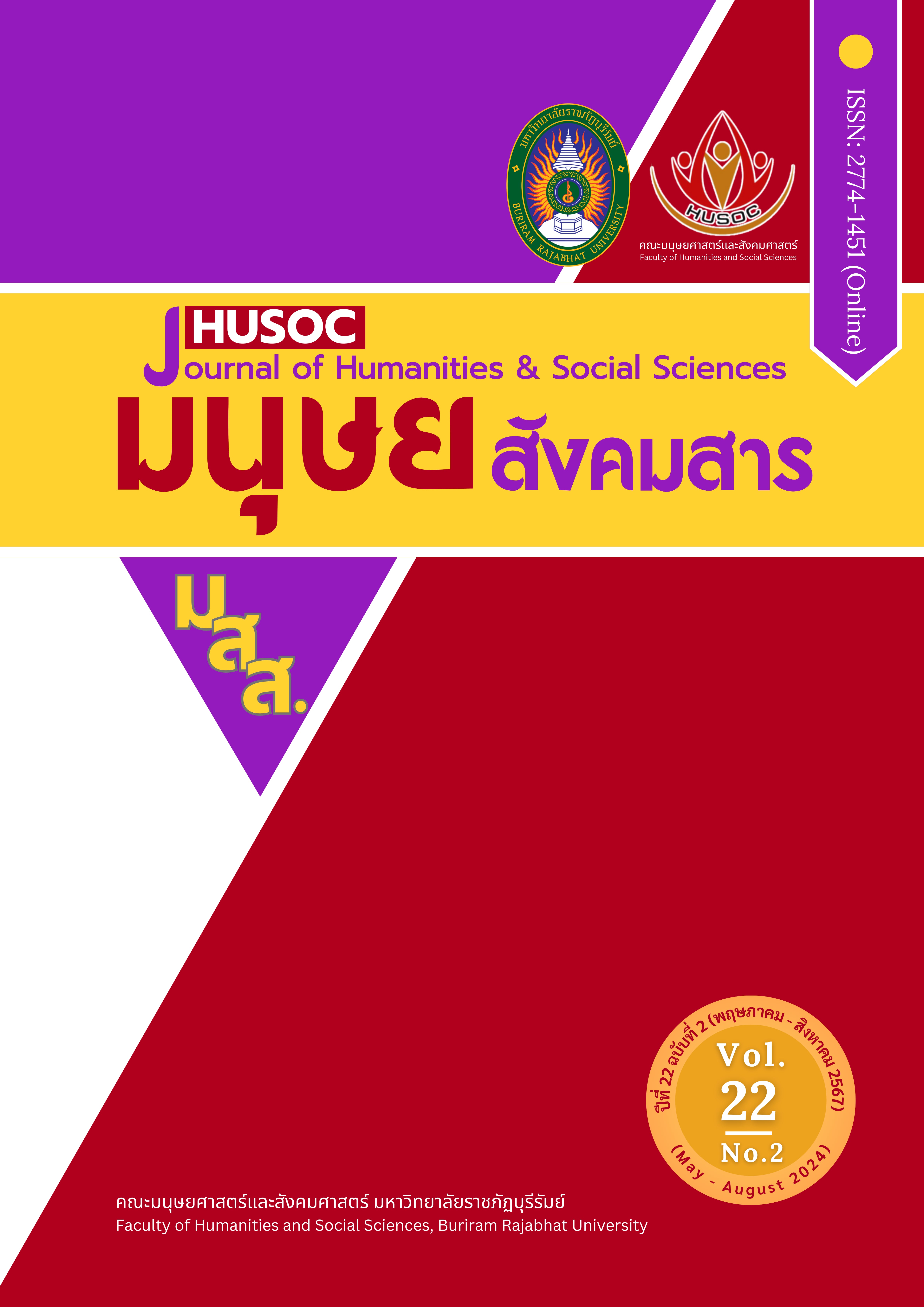Strategy for Managing Cultural Tourism at the Secondary City Level to Support Tourism Policy in the Digital Age
Main Article Content
Abstract
The objective of this research was to apply the analyzed and synthesized strategies of cultural tourism management in secondary cities to local management. The population and sample in this research were 279 homestay community enterprises in 18 secondary provinces of the Northeastern region. A quantitative research method was used. The instruments used for data collection were questionnaires. Data were analyzed using descriptive statistics and inferential statistics, including frequency, percentage, mean, and standard deviation, and Enter Multiple Regression Analysis. The research findings indicate that the overall management techniques were at a high level (x̄ = 4.46). Upon analyzing the relationship between the variables, it was discovered that a 1-unit increase in cultural tourism corresponds to a 0.08 unit increase in digital tourism policy. Each incremental rise of 1 unit in management strategies would result in a corresponding increase of 0.05 units in digital tourism policies. The recommendations for enhancing cultural tourism management in secondary cities should focus on fostering the growth of cultural tourism elements and implementing effective management strategies.
Article Details

This work is licensed under a Creative Commons Attribution-NonCommercial 4.0 International License.
เนื้อหาและข้อมูลในบทความที่ลงตีพิมพ์ในวารสารทดสอบระบบ ThaiJo2 ถือเป็นข้อคิดเห็นและความรับผิดชอบของผู้เขียนบทความโดยตรงซึ่งกองบรรณาธิการวารสาร ไม่จำเป็นต้องเห็นด้วย หรือร่วมรับผิดชอบใดๆ
บทความ ข้อมูล เนื้อหา รูปภาพ ฯลฯ ที่ได้รับการตีพิมพ์ในวารสารทดสอบระบบ ThaiJo2 ถือเป็นลิขสิทธิ์ของวารสารทดสอบระบบ ThaiJo2 หากบุคคลหรือหน่วยงานใดต้องการนำทั้งหมดหรือส่วนหนึ่งส่วนใดไปเผยแพร่ต่อหรือเพื่อกระทำการใดๆ จะต้องได้รับอนุญาตเป็นลายลักอักษรจากวารสารทดสอบระบบ ThaiJo2 ก่อนเท่านั้น
References
Arvid, V., Emily, H., & Bryan S.R. G. (2021). Cultural Sensitivity: Engaging difference in tourism. Annals of Tourism Research, 89(103223). https://doi.org/10.1016/j.annals.2021.103223
Fotis, K., Eleftheria, M., Eleni, M., & Maria, K. (2022). User-Generated Content behavior and digital tourism services: ASEM-neural network model for information trust in social networking sites. International Journal of Information Management Data Insights. 2(1). DOI: 10.1016/j.jjimei.2021.100056
Greg, R. (2018). Cultural Tourism: A review of recent research and trends. Journal of Hospitality and Tourism Management, 36(12-21). https://doi.org/10.1016/j.jhtm.2018.03.005
Jing, L., Philip, L. P., & Her, O. (2020). Can digital-free tourism build character strengths. Annals of Tourism Research, 85(103037). https://doi.org/10.1016/j.annals.2020.103037
Noppon, A. (2021). The Guidance for Developing a Collaborative Governance Model and Promoting Cultural Tourism Management within the Northeastern Phu-tai Ethnic Communities. Journal of Social Sciences and Humanities, 47(2), 85-100. [in Thai]
Nunnally, J. C. (1978). Psychometric theory (2nd ed.). McGraw-Hill.
Mopraprad, N. (2022). Application of technology and innovation for the hotel industry in the digital age. Western University Research Journal Humanities and Social Sciences, 8(1), 251-266. [in Thai]
Susanne, M., Sandra, F., & Mika, K. (2021). Digital transformation in tourism: Modes for continuing professional development in a virtual community of practice. Project Leadership and Society, 2(100034). https://doi.org/10.1016/j.plas.2021.100034
Udomthanasansakul, P. (2021). Influence of government policy and crisis management on strategies. Carrying out the work of small and medium sized enterprises Service sector in Chiang Mai province During the crisis of COVID-19 epidemic. Maejo University. [in Thai]
Wang, Q., Li, Y., & Zhonggang, Y. (2022). Research on development of digital finance in improving efficiency of tourism resource allocation. Resources, Environment and Sustainability, 8(100054). https://doi.org/10.1016/j.resenv.2022.100054


